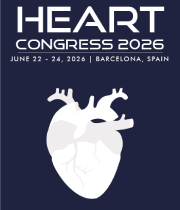Cardiopulmonary Bypass
Cardiopulmonary bypass (CPB) is a medical technique that temporarily takes over the function of the heart and lungs during cardiac surgery, allowing surgeons to perform intricate procedures on the heart. This sophisticated procedure involves diverting the patient's blood away from the heart and lungs, using a heart-lung machine that takes over the oxygenation and circulation of blood throughout the body. The machine removes carbon dioxide and adds oxygen to the blood, mimicking the natural functions of the heart and lungs. By employing CPB, surgeons can operate on a motionless and bloodless heart, facilitating complex cardiac surgeries that would be otherwise challenging or impossible. While essential for many cardiac procedures, the use of cardiopulmonary bypass does carry some risks, and ongoing research focuses on optimizing its techniques to minimize potential complications and enhance patient outcomes. The development of this technology has significantly advanced the field of cardiac surgery, enabling life-saving interventions and improving the overall success of complex heart surgeries.

Shuping Zhong
University of Southern California, United States
Ahdy Wadie Helmy
Indiana University School of Medicine, United States
Federico Benetti
Benetti Foundation, Argentina
Ishan Abdullah
George Washington University School of Medicine and Health Sciences, United States
Sana Tariq
Manchester University NHS Foundation Trust, United Kingdom
Achi Kamaraj
Royal Brisbane and Women’s Hospital, Austria




Title : Historical evolution from OPCAB to MIDCAB to mini OPCAB surgical technique and results
Federico Benetti, Benetti Foundation, Argentina
Title : Fats of Life, the skinny on statins and beyond !
Ahdy Wadie Helmy, Indiana University School of Medicine, United States
Title : Novel ways of cardiovascular risk assessment
Syed Raza, Awali Hospital, Bahrain
Title : Study of pathological cardiac hypertrophy regression
Shuping Zhong, University of Southern California, United States
Title : Personalized and Precision Medicine (PPM) and PPN-guided cardiology practice as a unique model via translational applications and upgraded business modeling to secure human healthcare, wellness and biosafety
Sergey Suchkov, N. D. Zelinskii Institute for Organic Chemistry of the Russian Academy of Sciences, Russian Federation
Title : Atypical takotsubo cardiomyopathy presenting as st-elevation myocardial infarction
Sana Tariq, Manchester University NHS Foundation Trust, United Kingdom